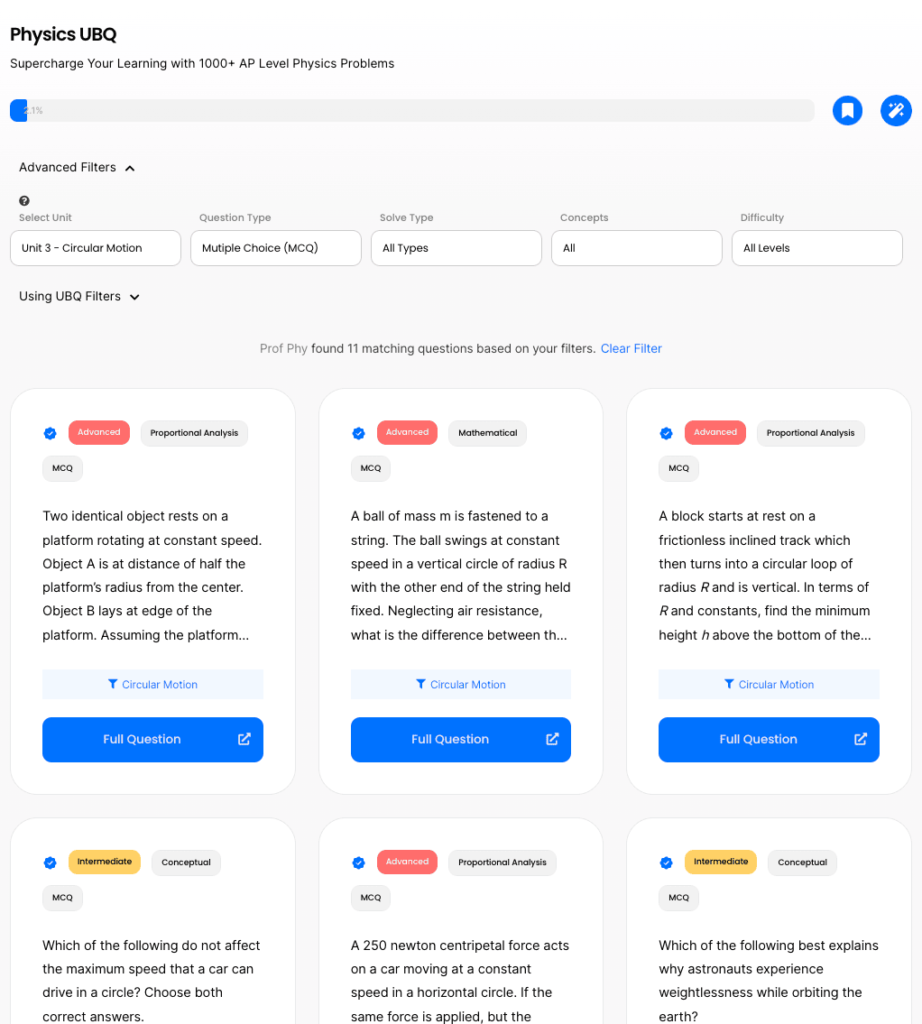Why UBQ?
Skip the notes, textbooks, and long videos. Simply solve 60 physics questions to ace your next test.
This is a research backed method. Solving more questions results in higher scores.
I created UBQ, the Ultimate Bank of Physics Questions, to make it easy to practice test like questions.
Check out UBQ here.
Phy helps with physics questions
To make learning faster, Phy grades all responses, provide explanations, and can help you solve the problem from scratch.
Every student gets 10 UBQ credits. If you find UBQ + Phy helpful, you can unlock unlimited credits (it’s super cheap).
Physics Question Filters
Use filters to narrow down your search.
Units
UBQ has 8 units corresponding to the 8 Units in AP Physics 1: Mechanics. That said Honors, Regular Physics, and even college students can use UBQ.
The 8 Units in Mechanics Include:
- Vectors and Kinematics
- Linear Forces (Dynamics)
- Centripetal Motion and Gravitation
- Energy
- Linear Momentum
- Rotational Motion and Torque
- Simple Harmonic Motion
- Fluids
Question Types
Three questions types:
- GQ is a general question. One point each.
- MCQ is a multiple choice question. One point each.
- FRQ is free response question. Multiple parts, with varying points for each.
Solve Types
Three “solve” types:
- Conceptual – tests for understanding of concepts rather than calculations.
- Mathematical – requires the use/ and derivation of equations.
- Proportional Analysis – requires the derivation of a general equation to see the relationship between two or more variable.
Concepts
- Single – Single unit, topic, or law involved.
- Concept Pairing – multiple unit, topic, or law required to solve questions. All FRQs are usually multi-concept.
Difficulty Levels
- Beginner – for when you just have learned the unit or topic.
- Intermediate – for when you want to better grasp the topic
- Advanced – for mastery of the topic. These are the difficult, test-like questions.
Answers, Grading, and Phy
Phy is the world’s best Physics AI tutor. It grades your answers and creates custom explanation in seconds.
You can literally hand write your FRQs, take a picture of it, and have Phy grade it. The possibilities are endless. More on Phy here. Happy learning!
Try out Phy here for free!


